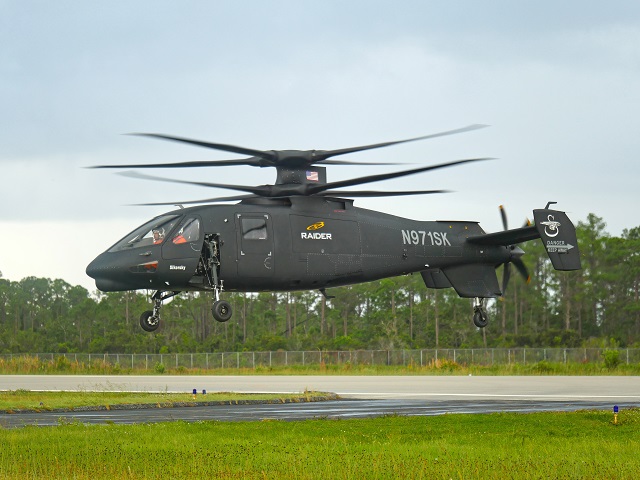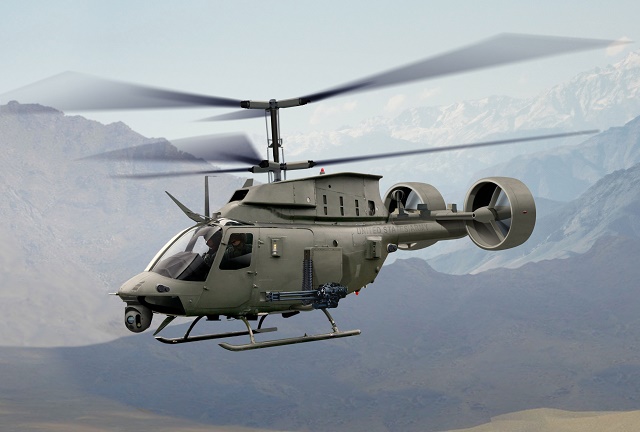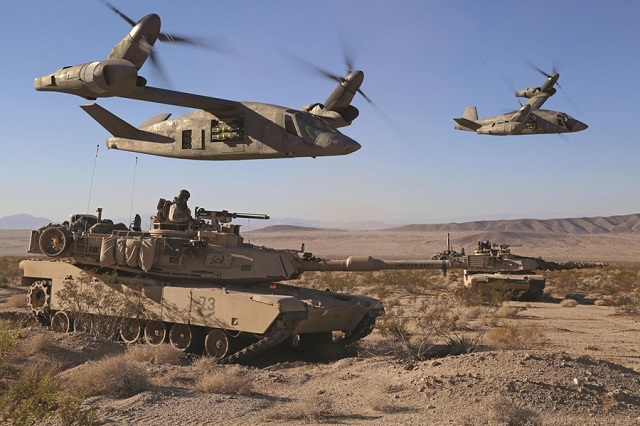The US Army’s requirement for a next-generation armed scout platform to replace the acclaimed Bell OH-58 Kiowa has been around since the Light Helicopter Experimental (LHX) programme of the 1980s.
Now, as the remaining Kiowas are being scrapped, stored or sold without a dedicated, manned replacement, the army could decide this year whether to launch another light attack/reconnaissance rotorcraft development effort under the banner of Future Vertical Lift (FVL).
The assumed plan has been that the army would move first on “FVL Medium” as a natural follow-on to the 13,600kg (30,000lb)-class technology demonstrator showdown between the Sikorsky-Boeing SB-1 Defiant and Bell Helicopter V-280 Valor prototypes.
But a “Capability Set 1” request for information (RFI) released last month and seeking rotorcraft options for the “light attack/reconnaissance role”, has long-time FVL players, particularly Sikorsky, pushing rotorcraft like the S-97 Raider, first flown in May. Bell, Boeing, AVX, Karem and MD Helicopters have also shown interest, but have not shown their hands.

Sikorsky S-97 Raider
Lockheed Martin
Army officials will not say which way they are leaning. Maj Gen Michael Lundy, commander of the army aviation centre of excellence at Fort Rucker, Alabama, says the light armed reconnaissance requirement, around since LHX and the subsequent Boeing-Sikorsky RAH-66 Comanche project, has not disappeared. That is even as new "manned-unmanned teams" comprised of the Boeing AH-64 Apache and Textron RQ-7 Shadow allow for the Kiowa’s retirement.
The army and US Special Operations Command still need the light attack reconnaissance capability, Lundy says. The US Marine Corps, meanwhile, needs a medium assault variant and the navy would field a “lower-end medium variant” for anti-submarine warfare.
“We’ve invested all of our time, effort and money” in the mid-size category that would replace the Apache and Sikorsky UH-60 Black Hawk through the Joint MultiRole (JMR) technology demonstration, Lundy says – but he still would not discount FVL Light.
“A lot of people ask me what colour the curtain’s going to be with FVL, but we don’t know yet,” Lundy said after a congressional hearing in mid-March. “We’re doing a lot of analysis on the different kinds of capabilities that we need, but really, the thing that’s going to help us finalise the analysis is seeing JMR fly and understanding what the technology is going to be capable of. We don’t want to go after something that’s not obtainable.”

AVX is pushing clean-sheet evolutions of its coaxial main rotor, dual ducted fan OH-58 configuration, proposed for the cancelled armed aerial scout procurement
AVX Aircraft
This year, the army intends to stand up a programme office for FVL – one tightly coupled with the Improved Turbine Engine Programme (ITEP), championed by Pratt & Whitney and GE Aviation as a replacement for the long-serving T700-series turboshaft engine that powers the Apache and Black Hawk.
Lundy’s written testimony confirms “a materiel development decision for the first FVL variant will occur in fiscal year 2017”; which begins in October.
“We already know that we’re not going to be going after a heavy FVL in the near term,” he says. “But we do know we’re going to have to think about how we replace our assault, attack and scout aircraft. A lot of people want us to lean one way or another, but the bottom line is, I’m trying to keep a very blank canvas so we can fully inform our decisions.”

Lockheed Martin
Sikorsky has bet both ways by investing in the S-97 and SB-1 – both compound coaxial-rotor, pusher-propeller types based on its X2 technology.
Mark Miller, Sikorsky’s vice-president of research and engineering, says the Lockheed-owned company is likely to propose a larger, single- or twin-engined version of the S-97, powered by the baseline ITEP or “growth ITEP” engine options. Sikorsky is responding to the RFIs for both the light and medium “capability sets”, it confirms.
“We feel good about it, because we’re well positioned on both,” says Miller, speaking at a Lockheed press briefing in Washington DC on 15 March.

Bell is proposing its V-280 tiltrotor as a mid-size assault or utility variant
Bell Helicopter
Asked about the armed reconnaissance requirement, Chris Van Buiten, vice-president of innovation at Sikorsky, says: “They highly value the operational curiosity of having a human on board, so I think it’s a logical part of the future fleet that you’d have some small light helicopters.”
“It’s a reaffirmation that the requirement has never gone away and it’s a need that still exists,” adds Miller.
Asked about its response to Capability Set 1, Boeing Phantom Works says: “It’s too early for us to share any comments or position regarding FVL-Light”.
Mike Hirschberg, executive director of AHS International, says regardless of which capability set is attempted first, the army has taken the "important" administrative step of setting up a programme office to move forward with a Department of Defense-approved programme of record and analysis of alternatives.
“This not just about replacing the Black Hawk or the Apache – this is the future plan for decades to come, of replacing all DoD rotorcraft,” he says.
Source: FlightGlobal.com



















